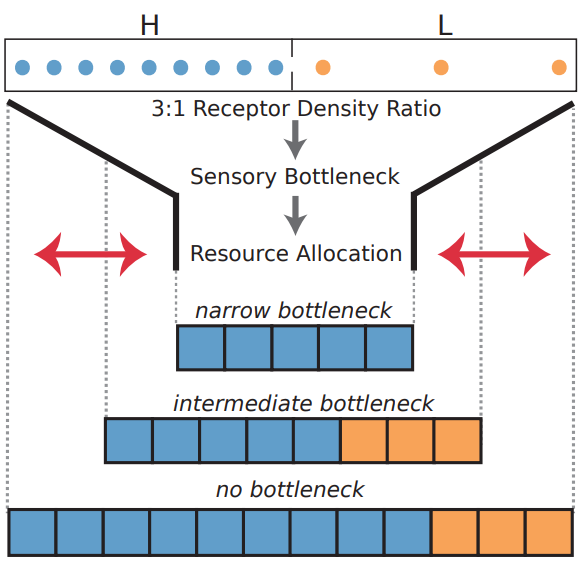Nonlinear scaling of resource allocation in sensory bottlenecks

Abstract
In many sensory systems, information transmission is constrained by a bottleneck, where the number of output neurons is vastly smaller than the number of input neurons. Efficient coding theory predicts that in these scenarios the brain should allocate its limited resources by removing redundant information. Previous work has typically assumed that receptors are uniformly distributed across the sensory sheet, when in reality these vary in density, often by an order of magnitude. How, then, should the brain efficiently allocate output neurons when the density of input neurons is nonuniform? Here, we show analytically and numerically that resource allocation scales nonlinearly in efficient coding models that maximize information transfer, when inputs arise from separate regions with different receptor densities. Importantly, the proportion of output neurons allocated to a given input region changes depending on the width of the bottleneck, and thus cannot be predicted from input density or region size alone. Narrow bottlenecks favor magnification of high density input regions, while wider bottlenecks often cause contraction. Our results demonstrate that both expansion and contraction of sensory input regions can arise in efficient coding models and that the final allocation crucially depends on the neural resources made available.